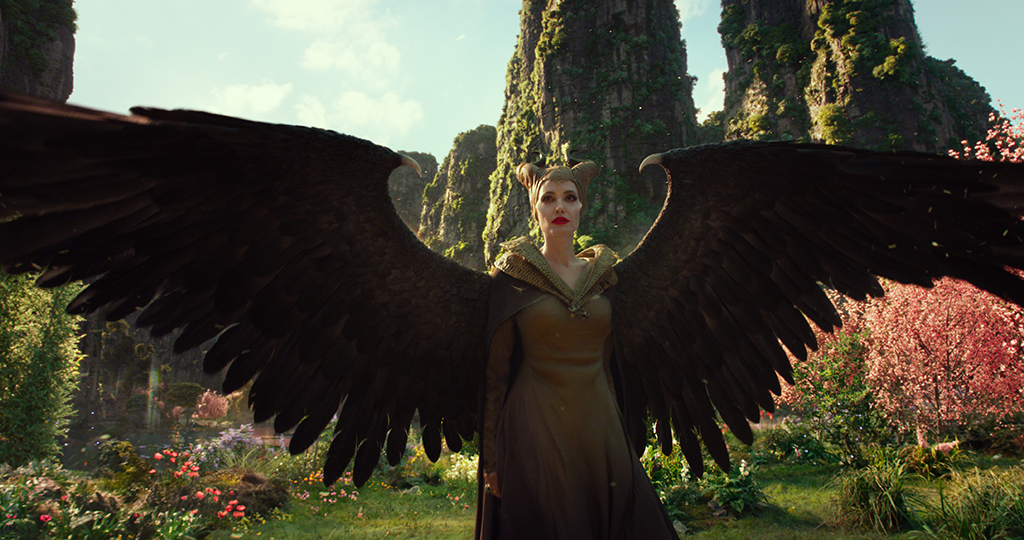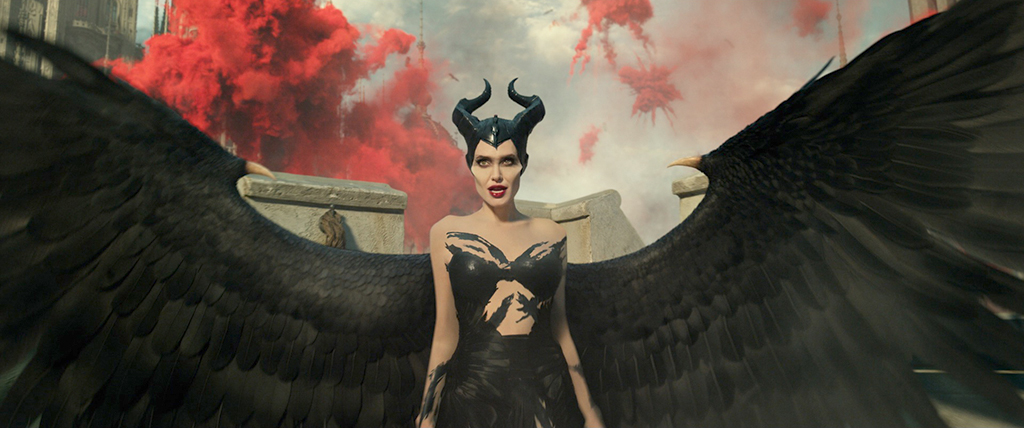By IAN FAILES
With many winged characters, Maleficent: Mistress of Evil was always going to be film in which flying scenes would be a major part, including in relation to its central character played by Angelina Jolie. Indeed, Jolie would perform a number of scenes – both action-oriented and more dialogue-heavy – ‘mid-flight.’
That meant the filmmakers, led by director Joachim Rønning, had to establish a means by which Maleficent and other characters could fly. For several shots, fully or partial digital doubles were crafted (the wings were always completely CG), while for others, on-set stunts involving the actors or stunt performers were required.
There are a multitude of ways that actors can be ‘flown,’ and Mistress of Evil’s creators considered quite a few of them, notes Production Visual Effects Supervisor Gary Brozenich from MPC. Brozenich worked with second unit director Simon Crane and stunt coordinator Jo McLaren, as well as Jolie, on the options. Initially, they looked into whether a robotic arm setup could work for flying moments.
“A robotic arm can work in conjunction with moving cameras,” he says. “It’s quite a comprehensive motion-control system, and it gets used for various films.”
After a few test sessions, however, the team soon realized that for the volume of shots they would need to get through on the film, the robotic arm approach was not going to work (it also involves many structured safety and setup procedures, and can be harder to make small fine-tuned adjustments).
Official Maleficent: Mistress of Evil b-roll footage showing the tuning fork rig in operation.
That meant, instead, a more traditional ‘tuning fork’ rig was considered, which was also utilized on the first film. “The rig works like this: if you can imagine almost like a pitchfork, with no center prong, the center prong being where the performer goes,” explains Brozenich.
“It’s got a steering wheel at the back and it’s got a wire that goes to the ceiling on the top. Then it’s basically manually performed by the stunts team. The stunties wear the obligatory blue materials in a bluescreen environment, and they effectively ‘dance’ with the performer.
“The good thing about it is that when something doesn’t work, you can change it,” adds Brozenich. “So you can do six takes that are all very different from each other. If you need to stop then you just stop – the kill switch is a microphone away.”
Angelina Jolie is suspended on wires to accomplish a flying scene.
The tuning fork rig came in handy in particular for hovering scenes. Sometimes up to three actors were suspended in the rig within a bluescreen space. Wire work was also used, especially for take-offs and landings. “There’s a lot of digital takeovers used there in that respect, too,” says Brozenich, noting that many sequences featured fully-CG characters.
For flying scenes that saw live-action actors, or parts of them, retained in the plate – either in close-up or wider views – the visual effects team needed to add digital wings and also consider the flying motion of the characters.
Landings and take-offs were sometimes accomplished with wire work.
MPC Animation Supervisor Seng Lau, who oversaw the wings work at MPC for the film, says the basis for the wings began with predatory birds. The team would look at how birds of prey flew and how their wing mechanics operated, translating this to human actors to work out where the wings could be attached to shoulder blades or arms.
One of the challenges for the animation team was that for fully digital flying characters, they had complete freedom to animate the entire body and wings, but that for wire work or where the tuning fork rig was used, they had to ‘reverse engineer’ the wings onto the actors for flying moments.
“In some cases,” identifies Lau, “we would take the wire work and animate our wings to accommodate for the natural movements in the actors that came from that. In those instances we would match our wings to the performance. But if it was a very action-oriented shot, we would animate on top of the wire work and mitigate some of the natural bounce from the plate, and make it as dynamic or as exciting as we needed to.”
Watch the trailer for Maleficent: Mistress of Evil.










